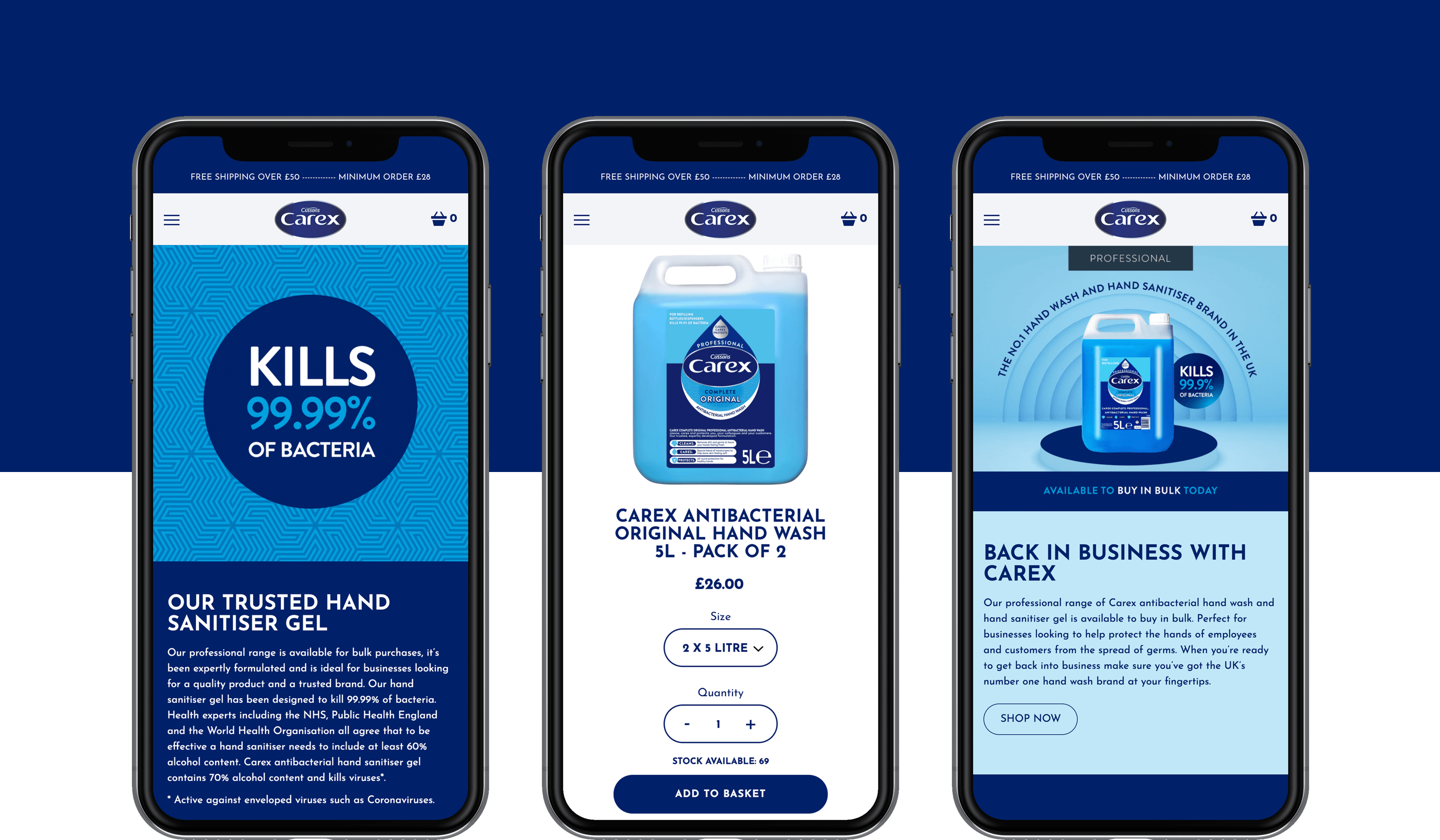

Carex
Solutions
- Shopify Plus Build
- Additional Custom Page Designs
- Developed And Launched In One Month
Bringing The UK’s No 1* Hand Hygiene Brand Direct To Door
Following the COVID-19 outbreak, there was significant rise in demand for hand hygiene products particularly from businesses wanting to buy in bulk to help keep their employees and customers safe.
Cafes, restaurants, shops, offices and schools have an increased responsibility to offer employees, customers, teachers and pupils hand hygiene solutions to keep them safe and reduce the risk of spreading infection. To help satisfy those needs, PZ Cussons launched their ecommerce site carexprofessional.co.uk, offering small to medium-sized organisations the convenience of direct to door delivery of hand hygiene products at the right price, from the UK’s no 1* hand hygiene brand.

“Agility was key for us in meeting the unprecedented demand for Carex hygiene solutions online. We were able to develop and successfully launch carexprofessional.co.uk in just over 4 weeks.”
Abigaile Adderley, IT Director, UK & Americas at PZ Cussons
With Shopify Plus, PZ Cussons was able to:
launch an online store in just over 4 weeks;
enter a market where they previously had no D2C/D2B presence;
and reach consumers directly when many were unable to shop in physical stores.
In order to take the Carex brand to market quickly, PZ Cussons needed to select an ecommerce platform and a partner with the capabilities to create and launch a site within weeks.
The Shopify platform is extremely quick to take to market, so it was a great choice that suited the needs of the project. When it came to a partner to deliver it, Eastside Co has been a Shopify Expert since 2012 with over 500 site builds, so had the experience and skills to deliver a great ecommerce site at pace.
Solution
Eastside Co recommended a theme build including an additional 3 custom page designs (for the About Us page, Product page and Homepage). The team’s knowledge of the Shopify platform, combined with project management and QA processes honed by years of experience meant the site was designed, developed and launched in less than a month.

Following the site design and build, Eastside Co supported the launch with SEO work to help gain visibility and traffic. As a new site on a new domain, it needed support to grow its search visibility so it was important to build the site’s authority and increase visibility on the search engine results pages. To do this, Eastside Co proposed a backlink-building plan to gain authority quickly, and expanded the use of schema to enhance the appearance of its listings in the SERPs.
“This was an exciting project - the deadlines were tight, so the objective was to work at pace while maintaining our high calibre of work. We’ve refined our processes over time so our teams work seamlessly: design, development, QA and marketing, all held together by our superb project management team. The project went smoothly - due also to the close working relationship we had with Carex.”
Laura Doxford, COO, Eastside Co

In addition to offering general SEO support and advice to augment the in-house team’s knowledge, Eastside Co also created a content plan driven by in-depth keyword research, to target the key customer segments.
Results
The work surrounding the quick launch paid off - just one month post-launch, the site’s performance was impressive:


* Nielsen sales data for 52 week period ending 8th August 2020

